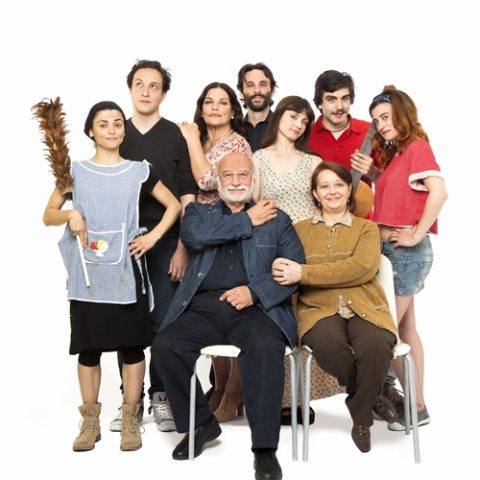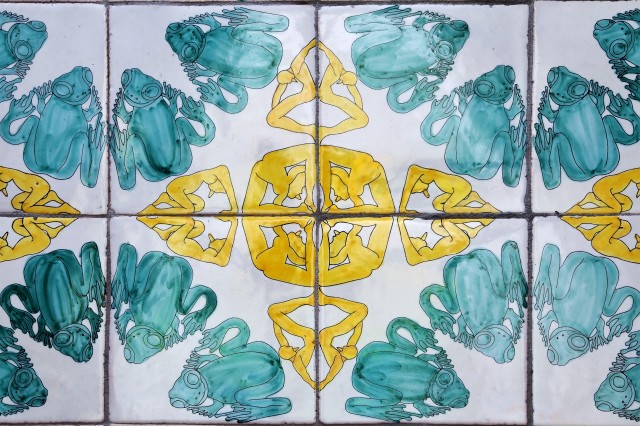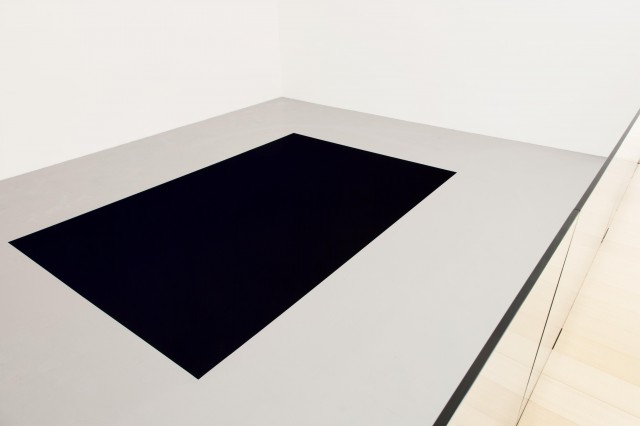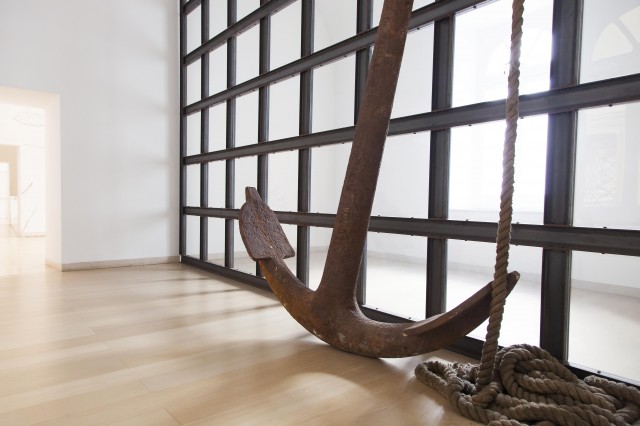In his books — among them The Camera Believes Everything (1988), The Velvet Grind: Satires, Essays, Interviews (2006), High Entertainment (2009) and Concrete Comedy: An Alternative History of Twentieth Century Comedy (2011) — as well as in his multimedia installations, such as the fifteen-year-l0ng relational, community-driven, performance-based Ice Cream Social project, American artist David Robbins (Whitefish Bay, Wisconsin, 1957) extensively explored the relationship between the values, methods, and visual grammars of contemporary art and those of the entertainment industry. Refusing to simply make “art about entertainment”, the artist has systematically blurred received notions of their differences to create, instead, a more dense and satisfactory hybrid, a multi-layered epistemic and sensorial texture, which allows art and entertainment to narratively as well as critically merge one into the other.
Appropriately, when invited by Madre museum to do an exhibition in the context of the Per_forming a Collection (Intermezzo) constellation of projects, Robbins proposed the museum to produce a TV show with actors from a Neapolitan theater group — a far cry from the usual artistic statements and museum projects about the dominant structure of entertainment culture. In his project for the Madre, titled TV Family, Robbins has applied (quoting the artist) the “power of an institution of high culture to produce pop culture that the pop culture system isn’t making”. Working this way, Robbins repositions the museum’s function while at the same time imbuing entertainment with the ambitions he wishes it to have. Rather than interpreting the museum as a “receptacle where to display artworks in”, Robbins uses the institution in a more muscular way. The result “will bump up against the reasons why popular culture is as it is and why high culture is the way it is.”
In TV Family Robbins generates a fascinating hybrid that combines art’s experimentalism with entertainment’s accessibility, an approach he terms “high entertainment”. This rapprochement between high and pop cultures is made possible by the current digital revolution as well as by the adoption of a wider idea of what museums could achieve in our contemporary media field to implicate and resonate with audiences at large. In his TV Family project Robbins addresses the contemporary Italian cultural scenario, using its governing communication format: a television show.
As recently explained by Raffaella Silvestri in her 21st April, 2014 article on The New York Times, in its early days, Italian TV played “a significant, unifying role in a country with deep but diverse cultural pockets and a short political history, acting as the main source of information and knowledge for most Italians.” From the 70s on, with the rise of commercial TV stations and groups, television has become Italy’s pervasive “national compass”, for good as well as bad, as more recently Matteo Garrone showed us in his movie Reality, shot in Naples and mirroring the actual Italian fascination for reality shows.
Robbins’ TV Family articulates interactions among nine characters, members of a family whose household is adjusting to the arrival of a new baby, Pixel. In this way Robbins addresses what he sees as “a crisis in the representation of the family. In movies and TV the family is clearly represented but the internet, fast becoming the dominant media form, hasn’t figured out its own way to represent the family. It hasn’t yet invented a mirror.” To create a stage for exploring the crisis, Robbins has transposed the Tumblr style of website — segmented mosaics of pictures, revealed by vertically scrolling — into video. Web technology determines the project’s visual and narrative architecture.
Quoting the artist, “the video is organized to show a cross-section of a house which continuously scrolls down at a gradual rate, in the manner of an online Tumblr site, revealing more and more rooms where the characters appear and reappear, speaking their lines. How do we tell a story that goes up and down rather than forward — left to right? That’s the challenge to narrative which the web has introduced.“ Instead of a story arc with a beginning and end, then, the script presents emotional textures via the characters’ opinions, desires, and anxieties — a cross-section of a make-believe family that corresponds to the cross-section of the platform on which it is staged.
As a TV show frequently has an accompanying theme song, Robbins thought an art exhibition featuring a TV show should too. Recorded with musicians in Milwaukee, Theme Song For An Exhibition is a natural step in Robbins’s thirty-year career of cross-pollinating the art and entertainment contexts, initiated with his seminal work Talent (1986). Theme Song F0r An Exhibition is a “cool, cleanly produced, catchy, and accessible” pop song whose lyric content encourages the listener’s wish and ability to make culture. As such the song is intentionally applicable to any exhibition at any gallery or museum. The listener is encouraged to “Take the culture where you want it to go,” a message meant to reinforce the sense of agency indicated by another lyric, “History flows through you.”
To share this concept with other art institutions and thereby undertake an open, communal experiment in concept art distribution, the artist and Madre museum invited an international array of art institutions to participate in launching the song project via a ground-breaking experiment in inter-institutional cooperation. A consortium of sympathetic art institutions, among them ARC-Musée d’Art Moderne de la Ville de Paris; Boston Center for the Arts; Centre d’Art Contemporain, Genève; Charlottenborg, Copenhagen; Contemporary Art Museum, Houston; IKON Gallery, Birmingham; MOCAtv, Los Angeles; Museum of Contemporary Art, Chicago; Serpentine Gallery, London, will launch Theme Song For An Exhibition online in mid-June 2015, in conjunction of the opening at Madre.
AV



